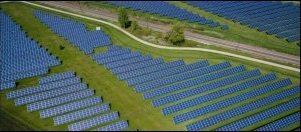Rethinking Solar Projects
Many countries have supported the growth of solar energy by creating financial incentives for large solar projects that could feed renewable energy into the electric grid. These solar farms, or utility-scale projects, use current market-available PV technologies to cover acres of land with ground-mounted solar panels. Both fertile and arid land is impacted, and the landscape is transformed with these large projects.
This has been the beginning of the solar energy industry, and there are some unintended undesirable effects of some large projects, including:
Grid-congestion: As the solar projects are often far from where the electricity is consumed, it has to be transmitted over long distances on high power lines, creating additional costs.
Land-use and Wildlife impacts: These large projects cover a lot of land. Sometimes land affected is potential farmland or wilderness areas. The US Dept. of Energy is now founding a program to evaluate wildlife impacts of solar PV as the US looks to add millions of acres of new PV.
PI Energy’s technology enables a rethinking of how solar projects could be better in the future. As we come to rely on far more solar energy, it needs to be cost-competitive and sustainable. PI Energy is developing solar PV that is designed to be: thin, lightweight, flexible, non-toxic, and easy to install. So, now we can contemplate making solar projects in urban and suburban areas; covering large area roofs, walls, fences and shading structures. With a cumulative effective area equal to a traditional solar project, the cityscape can be the location of future solar projects.
The benefit of placing new solar projects on urban landscapes:
No need to transmit the power along high voltage power lines, because it can be consumed locally.
No need to use new land, so no new wildlife or land-use impacts.
With PI Energy’s technology we can make sustainability far more cost-competitive and practical. Thank you for joining us in on our path to make solar energy bigger and better.



